In today’s competitive job market, having a standout resume is crucial, and LinkedIn is a powerful tool to help you craft one. I’ve seen firsthand how a well-optimized LinkedIn profile can elevate your resume from ordinary to extraordinary. It’s not just about listing your experiences; it’s about showcasing your unique value and professional brand.
When I started using LinkedIn to enhance my resume, I discovered that the platform offers invaluable resources and insights. From networking opportunities to industry trends, LinkedIn can guide you in tailoring your resume to attract the right employers. Whether you’re a seasoned professional or just starting out, leveraging LinkedIn can make all the difference in landing that dream job.
Key Takeaways
- Optimize Your LinkedIn Profile: Craft a compelling headline and summary that showcase your unique skills and professional journey to enhance your resume’s appeal.
- Leverage Networking Opportunities: Engage with industry professionals on LinkedIn to gain insights and referrals that can significantly bolster your job prospects.
- Tailor Your Resume: Use LinkedIn insights to customize your resume for specific job roles by incorporating relevant keywords and skills that match employer expectations.
- Highlight Key Achievements: Focus on quantifiable results in your experience section to demonstrate your impact, and request endorsements to establish credibility.
- Utilize LinkedIn Resources: Take advantage of LinkedIn’s articles, webinars, and learning modules to refine your resume writing skills and stay updated on industry trends.
- Avoid Common Resume Pitfalls: Ensure your resume is concise, error-free, and customized for each application to maximize its effectiveness and visibility to potential employers.
LinkedIn Writing a Resume
Effective LinkedIn use enhances resume quality by providing a broader platform to express professional skills and experiences. A well-structured LinkedIn profile complements a resume through personalized branding and networking opportunities.
Key Elements of a LinkedIn Profile
- Headline: Create a concise headline that clearly reflects your current position and career aspirations.
- Summary: Write a compelling summary that offers insights into your career journey, skills, and values.
- Experience: List relevant experiences with quantifiable accomplishments to showcase your impact.
- Skills: Highlight key skills relevant to your industry, ensuring they align with those on your resume.
- Recommendations: Seek endorsements and recommendations from colleagues and supervisors to build credibility.
Leveraging Connections
Networking on LinkedIn provides access to industry professionals, veterans, and job opportunities. Engage with connections through meaningful interactions. This engagement can lead to valuable insights and referrals that enhance your resume’s appeal.
Tailoring Your Resume
Utilize insights gained from LinkedIn to customize your resume for specific roles. By analyzing job postings and profiles of others in your field, I identify relevant keywords and skills to incorporate into my resume. This targeted approach increases visibility to potential employers.
Resources for Writers
LinkedIn offers various resources like articles, webinars, and learning modules. These help refine resume writing skills and keep current with industry trends. Regularly exploring these resources can significantly elevate the quality of resumes.
Incorporating these strategies into my LinkedIn profile enables me to present a comprehensive professional narrative, greatly enhancing my resume’s effectiveness.
Importance of a Strong Resume
 A strong resume opens doors in a competitive job market. A compelling resume captures attention and communicates my skills, experiences, and unique value.
A strong resume opens doors in a competitive job market. A compelling resume captures attention and communicates my skills, experiences, and unique value.
Key Components of an Effective Resume
- Concise Summary: A strong summary highlights my career goals and core competencies in a few sentences.
- Relevant Experiences: Each job entry should clearly outline my responsibilities and achievements, focusing on quantifiable results.
- Tailored Skills: Listing skills relevant to the desired job increases the chances of alignment with employer expectations.
- Professional Formatting: Clean, consistent formatting enhances readability, making it easier for recruiters to digest information quickly.
- Action Verbs: Using action verbs like ‘achieved,’ ‘developed,’ and ‘managed’ creates a dynamic tone and illustrates my contributions effectively.
- Keywords: Incorporating industry-specific keywords helps my resume pass through applicant tracking systems (ATS).
- Typos and Errors: A single typo can undermine professionalism. Proofreading ensures clarity and attention to detail.
- Generic Resumes: Sending out a one-size-fits-all resume misses opportunities. Customization for each job application enhances relevance.
- Excessive Length: Lengthy resumes often lose impact. Keeping it to one page for early careers or two pages for seasoned professionals ensures conciseness.
- Ignoring Formatting: Overly complex designs can confuse recruiters. A simple layout helps showcase my qualifications effectively.
- Lack of Specifics: Failing to provide measurable achievements leaves my contributions unclear. Quantifiable metrics illustrate my success more clearly.
By focusing on these key components and avoiding common pitfalls, I can present a strong resume that stands out and truly reflects my professional capabilities.
Leveraging LinkedIn for Resume Writing
LinkedIn serves as an invaluable resource for enhancing resume writing. By utilizing its features and network, I can create a more impactful resume that resonates with potential employers.
Utilizing LinkedIn Features
I focus on key LinkedIn features to strengthen my resume.
- Profile Headline: I craft a concise, impactful headline to convey my professional identity and niche. This serves as the first impression for recruiters.
- Summary Section: I write a compelling summary that encapsulates my achievements, skills, and career aspirations. This helps personalize my professional story.
- Experience Listings: I detail relevant work experiences, using specific metrics and accomplishments to illustrate the value I bring.
- Skills Endorsements: I highlight the most pertinent skills endorsed by my connections, reinforcing my qualifications in the eyes of potential employers.
- Recommendations: I request recommendations from colleagues or supervisors to add credibility to my profile. These testimonials provide social proof of my capabilities.
These features not only enhance the profile but also inform the content of my resume.
Building Your Professional Network
I prioritize network building on LinkedIn to bolster my job prospects.
- Connection Growth: I actively connect with industry professionals, former colleagues, and alumni to expand my network. A broader network exposes me to more opportunities and insider insights.
- Engagement: I engage with connections by liking, commenting, and sharing their posts. This keeps me visible and strengthens professional relationships.
- Industry Groups: I join relevant industry groups to exchange knowledge, stay informed about trends, and access job postings. Participating in discussions positions me as an informed candidate.
- Networking Events: I attend virtual networking events and webinars hosted through LinkedIn. These interactions often lead to valuable referrals and job openings.
These strategies not only enhance my connections but also lead to valuable insights that can be integrated into my resume.
Tips for Writing an Impressive Resume on LinkedIn
Crafting an impressive resume on LinkedIn requires thoughtful strategies. It’s essential to appeal to specific job roles and clearly showcase unique skills and achievements.
Tailoring Your Resume for Different Jobs
Tailoring resumes for each job application significantly increases the chances of getting noticed. I analyze job descriptions to identify keywords and skills that employers prioritize. Matching these elements in my LinkedIn resume helps demonstrate alignment with the job requirements. I adjust my summary and highlight experiences related to the positions I’m targeting. Including specific examples of achievements relevant to each role also makes my application stand out.
Showcasing Your Skills and Achievements
Showcasing skills and achievements effectively captures the attention of potential employers. I focus on highlighting core competencies relevant to my industry, using concise bullet points. Quantifying accomplishments adds credibility—sharing metrics, such as “”increased sales by 30%,”” provides concrete evidence of my contributions. Additionally, I request endorsements from connections for skills listed on my profile, as these endorsements act as social proof, enhancing my credibility. Including a featured section for significant projects or publications further emphasizes my professional narrative.
Harnessing the power of LinkedIn to enhance your resume is a game changer. I’ve seen firsthand how a well-crafted LinkedIn profile can elevate your professional narrative and attract the attention of potential employers. By focusing on key elements like a concise headline and compelling summary, you can create a strong personal brand that stands out.
Don’t underestimate the value of networking and engaging with industry professionals. These connections can provide insights and referrals that can significantly boost your resume’s appeal. Remember to tailor your resume with the keywords and skills you discover on LinkedIn. With these strategies in place, you’ll be well on your way to landing the job you desire.

